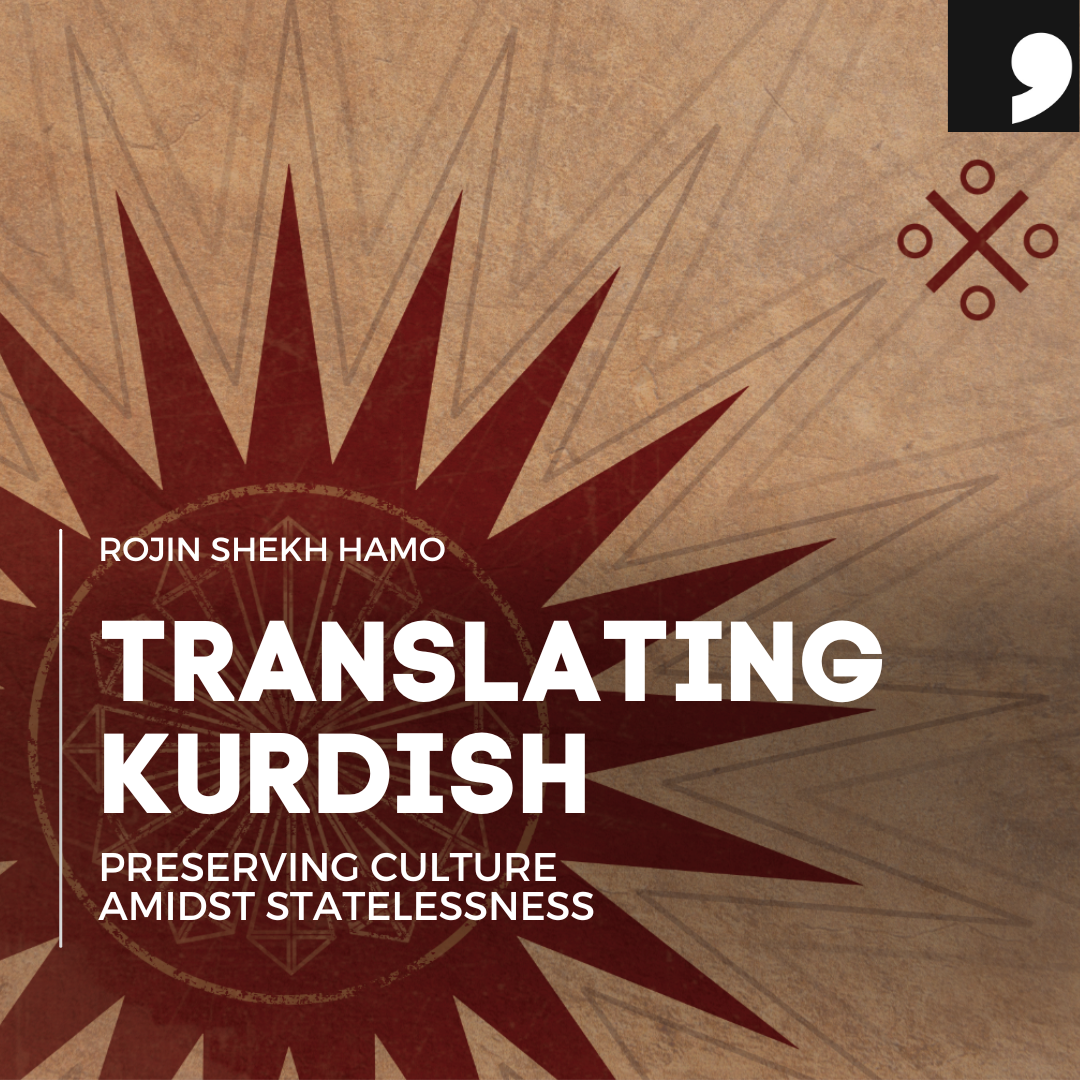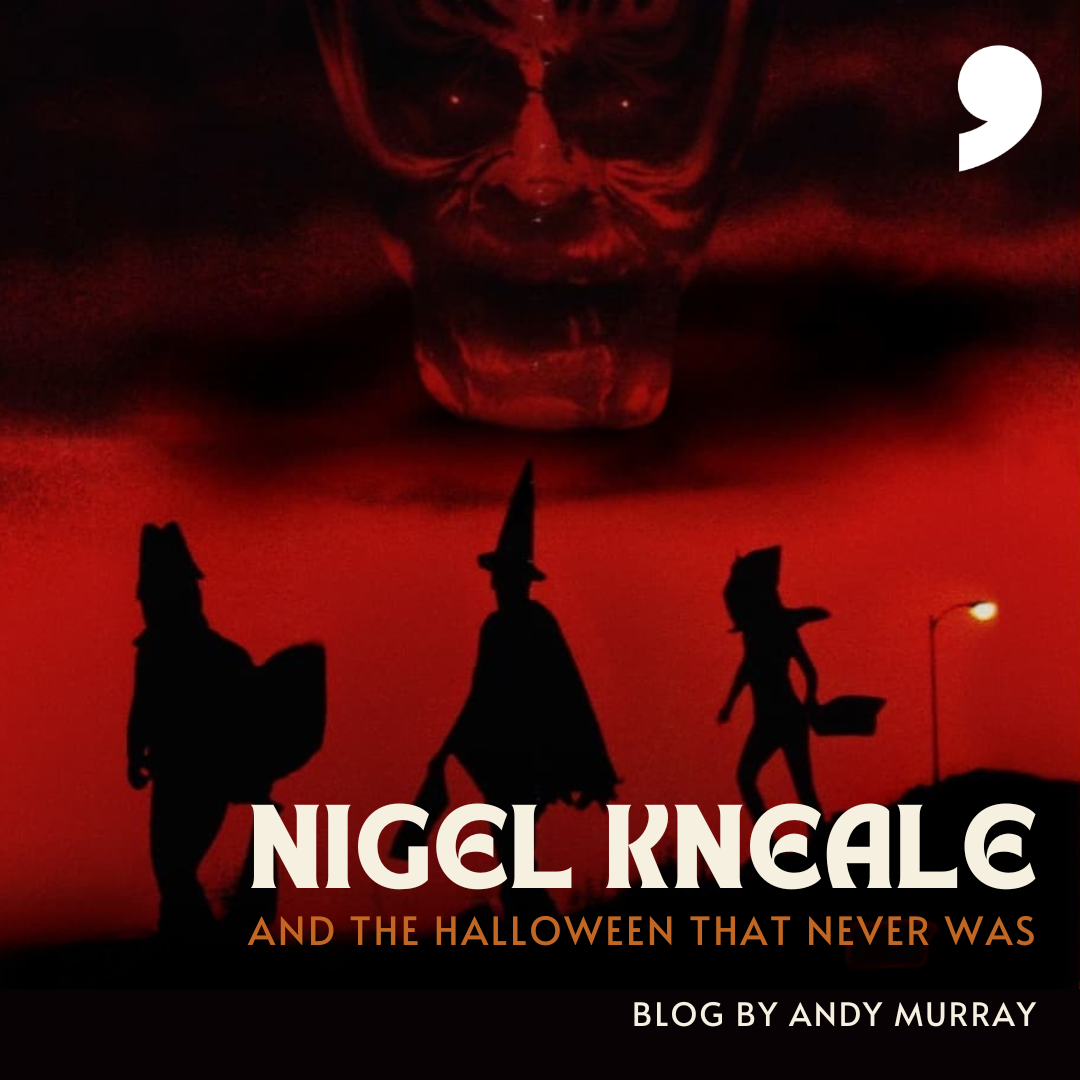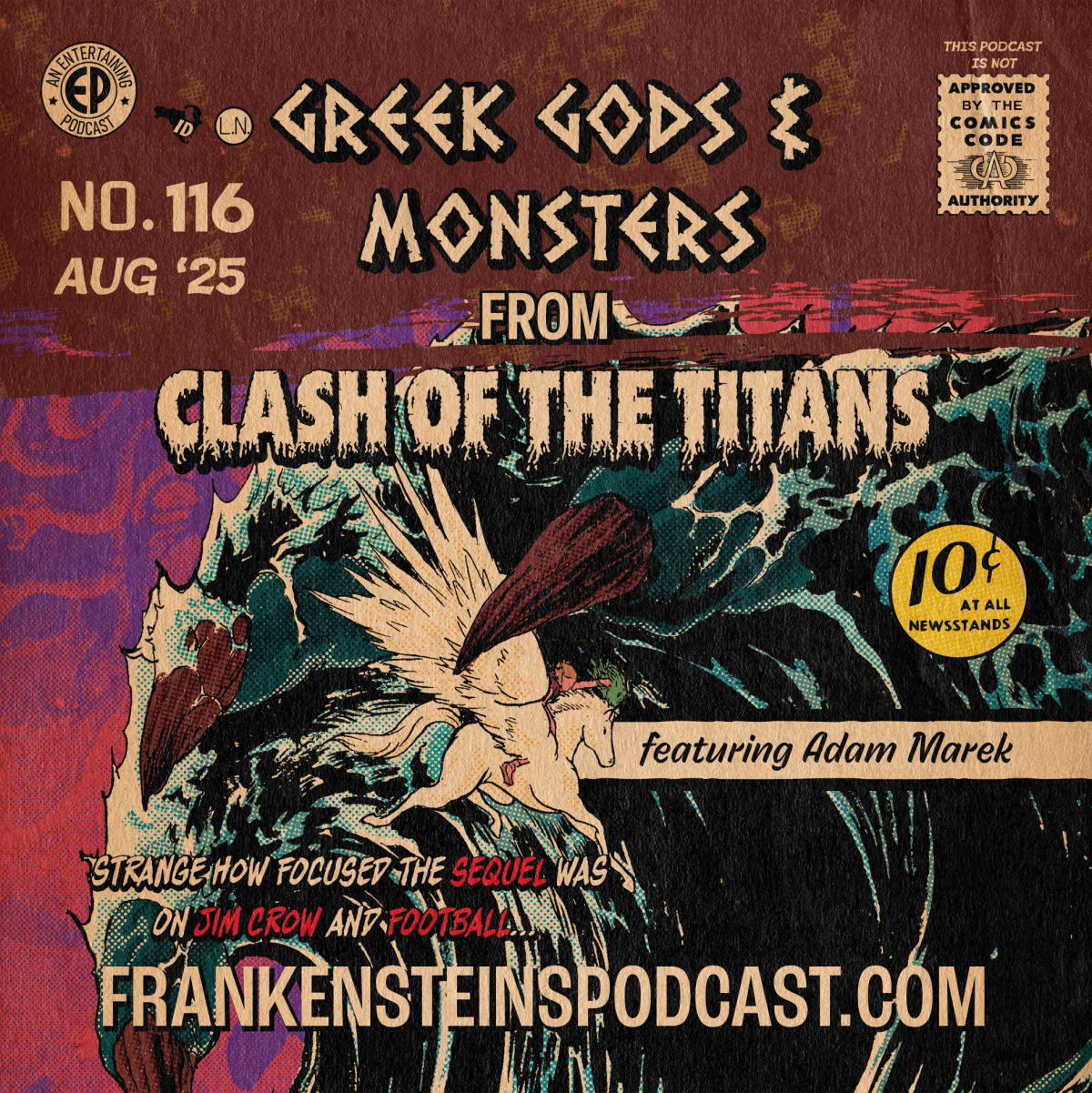Translating Kurdish Literature: Rojin Shekh Hamo
Translator Rojin Shekh Hamo delves into the difficult but necessary task of translating Kurdish literature.
Kurdish, a language spoken by more than thirty million Kurds around the world, has a rich literary culture that is overshadowed in the global arena. Split between four nation-states in the Middle East, Kurds have faced various forms of oppression, with cultural and linguistic suppression in the forefront. The intricate relation between the Kurdish identity and language has resulted in systematic erasure attempts by the governing powers in Kurdish regions. Spoken in various dialects and written in at least three different scripts, the process of translating Kurdish literature becomes a complex yet essential task. The translator, involuntarily, embarks on a journey that requires not only in-depth linguistic research, but a profound investigation of the cultural and political sensitivities embedded. This article explores the challenges translators face in translating Kurdish literature, particularly the Kurmanji dialect, and what impedes its reach to the global literary arena.
Literary translation is characterized by its linguistic complexity in comparison to the translation of common language. Literary translators need to be qualified academically and professionally to ensure the quality of the translation. This entails the availability of reliable resources, with dictionaries being the most essential tools in the translation process, without which the translation would be lacking. In this sense, the complexity of those challenges is twofold for translators of Kurdish literature, particularly in the Kurmanji dialect, due to the political status of Kurds in the world. Kurdish language and identity have gone through harsh assimilation attempts, mainly from the governing powers in turkey, Iran, Syria and Iraq for centuries now. Scholars Farangis Ghaderi and Johanna Bocheńska explain that “Turkey, in particular, was notorious for its ban on the Kurdish (Kurmanji) language lasting until 1991; its policy has been described as linguicide and ethnocide”. Not to mention that a lot of historical and linguistic documents written in Kurdish were lost, censored or destroyed by the governing powers in Kurdistan. Ghaderi, in another article, cites Kurdish-Iranian linguist Amir Hassanpour, who notes that “most manuscripts, especially those in private possession, were destroyed under repressive conditions in Turkey, Iran, and Syria”. Kurdish-Iranian poet, Hejar Mukriyanî recounts in his memoir, Çêştî Micêwir, the challenges of preserving Kurdish books during the ruling era of Reza Shah Pahlavi. Fearing arrest, people were forced to either burn or bury Kurdish books they had, including manuscripts.
Additionally, the unfamiliarity of the global audience with the socio-political situation of the Kurdish struggle can impede the readability of translated Kurdish literature. For instance, reading the works of Erebê Şemo requires the reader to delve into the historical and political context of Kurds under the Ottomans, and in order to fully grasp the emotional depth of the story ‘Rising Like Water’ by Omer Dilsoz in the Kurdistan + 100 anthology, the reader needs at least a background in Qazi Muhammad’s history and the Republic of Mahabad, the emotional significance of the Chwarchira square for Kurds, and Ahmad Khani’s 17th century romantic epic: Mem and Zin.
Furthermore, translators and writers living in Kurdistan can be at risk of prosecution when writing or translating politically, or even culturally charged Kurdish works. The writer and teacher Dilshad Marivani was persecuted by Saddam Hussein’s regime simply for teaching his students Kurdish in the Latin script instead of Arabic, and the civil activist and Kurdish teacher, Zara Mohamedi was imprisoned in 2019 for teaching Kurdish to her student. She was later released due to the deteriorating political situation in Iran. It is worth noting that the situation, in terms of the suppression of the Kurdish language, has changed for Kurds living in Kurdistan Regional Government and Rojava/Autonomous administration of Northeast Syria, however it remains unfortunate for Kurds living in Eastern and Northern Kurdistan. Another challenging aspect that translators face is Kurdish writers writing in the official languages of the governing states. One of the prominent Kurdish novelists and writers, Salim Barakat, for instance, writes in Arabic. Linguistically, Kurdish and Arabic are quite distinctive and belong to two different language families. Kurdish is an Indo-European language; it belongs to the northwestern Iranian branch, while Arabic is a Semitic language. In this sense the translation of his works would be layered with at least the characteristics of two cultures, one belonging to the oppressors. Thus, the translator must find a connection to give a linguistic Kurdish sense to the translated text, which has the potential of deviating from the language of the source text. The survival of Kurdish literature and language is owed to Kurdish oral tradition, characterized by its use of a remarkably poetic language. This language, packed with figurative expressions, layered meanings, cultural aspects, and most importantly dialectal gaps, complicates the translation task. The following stanza from the poem ‘Dezgirtiya Xortan’ (The Youth’s Beloved) by the acclaimed Kurdish poet Cegerxwîn, is a perfect example of the figurative language and layered meanings used in Kurdish literature:
îro roja xebatê, serxwebûn e doza we
Dema jîn û felatê, li ku maye soza we
Hûn tev şêrên di latê, rovî kete koza we
şikestî ne di matê, dijmin birye boza we
This poem starts as a plea from a woman to her lover, gradually unfolding a deeper meaning when the woman identifies herself as Kurdistan. Cegerxwîn employs figurative language to refer to Kurds as şêr/lions and their enemy as rovî/foxes. The foxes have infiltrated the ‘koz’/pen/lines/territory of lions. Also, the adjective ‘boz’ (white/fair) in the last line is employed as a noun referring to a fair-skinned woman. It directly translates into ‘the enemy has captured your fair/white’. The poet goes back and forth between referencing Kurdistan as the lover and the lover as Kurdistan, imparting nationalistic and romantic aspects in his poem. The translator must choose whether to use equivalents that carry excessive explanation of the poem’s layered meanings, compromising the emotional depth of the source text, or to use poetic equivalents that might compromise the clarity of the target text and create a cultural gap.
Moreover, Kurdish literature is mostly written in two Kurdish dialects, Kurmanji (Latin and Cyrillic script) and Sorani (Arabic script). Translators who aren’t familiar with the Arabic script or vice versa, hence, might find difficulty in translating Kurdish literature in other dialects. Adding to the complexity of the translation task, the dialects themselves have regional variations showcasing differences in syntax, vocabulary and pronunciation. An example of the regional variations of the Kurmanji dialect is the use of the word “talking/speaking” which has numerous equivalences like; “Peyivîn, şitexilîn, galgal kirin, şor kirin, gotin kirin, qise kirin, deng/dey kirin, xeber dan, axivtin, gep kirin." In this sense, when translating a certain Kurdish dialect, the translator is also risking the source text’s authenticity. This is because that specific dialect was employed to convey a specific sense that a standard language like English may not.
Another example that combines linguistic complexity and cultural difference is the translation of Kurdish idioms and metaphors. The translator is responsible of finding equivalences that share common, nearly similar cultural values but which keep the authenticity of the source text at the same time. Idioms are deeply rooted in Kurdish language and literature and can be hard to translate in certain instances. For example, the idiom “Ji xelkê ra masîgir, ji xwe ra kosîgir” can convey the same meaning indicated in the English idiom “The cobbler's children have no shoes”. However, the literal translation of the Kurdish idiom is “catching fish for the stranger while catching turtles for his own people”. This translation doesn’t convey the eloquent use of the animal imagery which is of thematic and symbolic significance in the Kurdish culture.
Portraying Kurdish intricacies, the idiom “Pîrê îna nedikir mêr bike, niha dewa şeşekan (heyştikan) dike” conveys ungratefulness and greed. The use of a religious satirical metaphor to reference the optional 6/8 days of fasting after Ramadan in Islam is an implication of the cultural and religious diversity of the Kurds. The sophisticated and multi layered satire inherent in such idioms is a distinctive aspect of the Kurdish literary culture where seemingly unrelated phrases convey profound cultural insights. Hence, this idiom indicates the ingratitude of the old lady seeking more than the obligatory 30 days of Ramadan, which reflects an insatiable greed of wanting more than what has already been accomplished.
The following is a variety of interesting Kurdish idioms (with literal translation) that might be challenging to translate:
“Xeta xwar ji gayê pîr e” - The crocked line starts from the old bull (to criticize old-fashioned customs and norms – the youth aren’t to be blamed for the wrongdoings of the old)
“Heta serî sax dimîne qûn ecêban dibîne” - As long as the head is alive, the butt will see wonders (said to express awe/amazement)
“Ji şîr tirsiya, pifkir dew”- Traumatized by the hot milk, he/she blew into Ayran/yoghurt drink (said to indicate cautiousness)
“Çavên li deriyan, xwelî li seriyan” - Eyes awaiting charity are doomed with mud/dust on their heads (said to criticize lazy people who live off charity)
“Dilê tirsonek sîng û berên gewr nabîne” - The coward heart doesn’t get to see the fair breasts and bosom (courage and cowardice)
Realistically, indirect equivalences can be found in the culture of the target text, however the translation of the distinctive emotional and cultural richness of the source text will be quite a rigorous and straining process. Several factors contribute to this issue, largely stemming from the problem of limited resources. American scholar of Middle Eastern languages Micheal Cheyt links this to the lack of specialized dictionaries, qualified linguists and educational materials that assist translators in their research.
The issue of the marginal status of Kurdish literature in the global literary arena can be largely attributed to statelessness. Kurdish literature is relegated to peripheral spaces around the politically dominant states. In this context, the statelessness of Kurds contributes to the challenges their literature undergoes in terms of recognition and representation as a discrete entity in the world stage. Moreover, fostering a translation movement of prominent Kurdish works will not only have the potential to empower and shape a universal Kurdish identity in the global literary arena, but can also be empowering for Kurds politically and culturally. Works of writers like Mehmet Uzun and Hiner Salim have the characteristics of universal literature that captivates the global audiences while safeguarding the distinct Kurdish identity. Salim’s, ‘My Father’s Rifle', translated into many languages narrates the childhood of a Kurdish boy living through war and the oppression of Kurds in Iraq until his decision to leave in adulthood. His book not only celebrates Kurdish culture but also intertwines it with the historical struggle of Kurds. Nevertheless, the disconnection of Kurdish writers, publishers and translators can be an impediment for the success of such a movement. This is mainly due to political differences, dialectal variances, and geographical distance. In his book, scholar and author Ahmadzadeh Hashem argues that due to the fragmentation of Kurds among the nation-states, Kurdish literature has “a cross-border and a transnational character" and therefore, it has developed without any “organic interrelations”. Yet this can be overcome through the aforementioned translation movement which the Kurdish poet and translator Kawa Nemir believes “will make huge leaps in the decades to come”.
The translation process of Kurdish literature brings along multiple challenges due to the geo-political, cultural and linguistic complexity of Kurds and their literature. The translators need to be not only highly qualified and professional, but also culturally and linguistically sensitive to dialectal varieties and figurative expressions. The political status of Kurds has had a great impact on their literature in being marginal and overshadowed by the literature of the governing states in the world arena. Consequently, Kurdish institutions, writers, publishers and translators have the duty of putting Kurdish literature under the spotlight in the world literary arena. Thus, an effectively administrated translation movement can achieve this goal serving as a cornerstone of building a Kurdish resources database.



